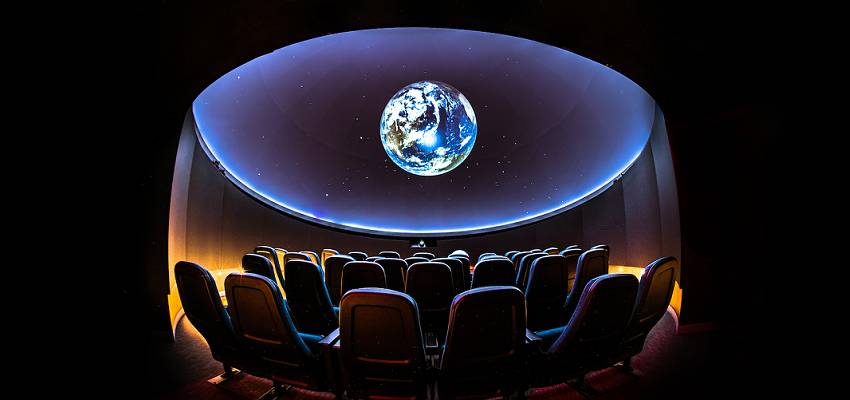
Background
The SUNY Cortland planetarium was completed in March of 2014, has a seating capacity of 41, and is located in the lobby of Bowers Hall. The dome is 8 meters in diameter, has a 15 degree tilt and a 0.45 reflectivity. Digistar 5 is the operating system used to generate fantastic, eye-gazing shows, visual effects and simulations. The inaugural show took place in October of 2014, and since then many groups such as college classes, local public schools and communities have visited it.
The planetarium is not limited only to star gazing and astronomy but can be used to accommodate many other disciplines. A wide variety of pre-made shows that cover geology, biology, chemistry and physics can be accessed as well.
How to Schedule a Show
If you have a group of 10 or more, and you wish to schedule a show, please click the link below to submit a request. You will be asked to provide the name of your group, the approximate number of people, and two possible dates and times. At least two weeks notice is required and there is no cost for showings.
Normal business hours are between 9:30 a.m. to 4 p.m., Monday through Friday during the academic school year. Nighttime and summer shows by special permission only.
Planet Walk
The Planet Walk was a project undertaken by the Physics and Engineering Club that was completed in 2016. A total of ten plaques layout the relative locations and separation of the Sun, nine planets and the Main Asteroid Belt in our solar system.
On this map, one inch is equivalent to 75 meters (approximately 250 feet). The separation of the plaques is based on shrinking the Sun down to the size of a volleyball. The locations of the ten plaques are as follows:
- The Sun - located in the heart of the Planetarium located in the lobby of Bowers Hall.
- Mercury - just outside the south door of Bowers Hall
- Venus - a few feet south of Mercury
- Earth - a few feet south of Venus
- Mars - a few yards south of Earth
- Main Asteroid Belt and Ceres (a dwarf planet) - located near the main sidewalk directly in front of the west side Sperry Hall
- Jupiter - located near the main sidewalk directly in front of the west side of the Memorial Library
- Saturn - located adjacent to the Education Building and across from Neubig Hall
- Uranus - located near the sidewalk outside of Randall Hall
- Neptune - located outside the main doors of the Student Life Center
Mission Statement
We encourage those who visit to gaze up at the night sky and open their minds to our vast universe. The planetarium serves to inform local communities about the solar system we live in, as well as what lies beyond our own Milky Way Galaxy, and to keep them up-to-date on the latest space missions, explorations and discoveries.